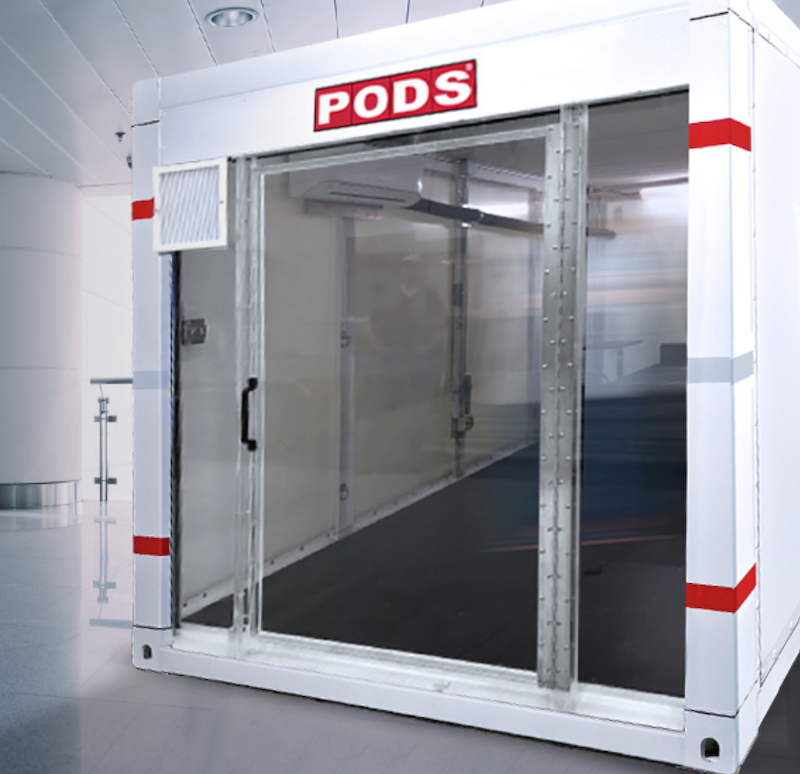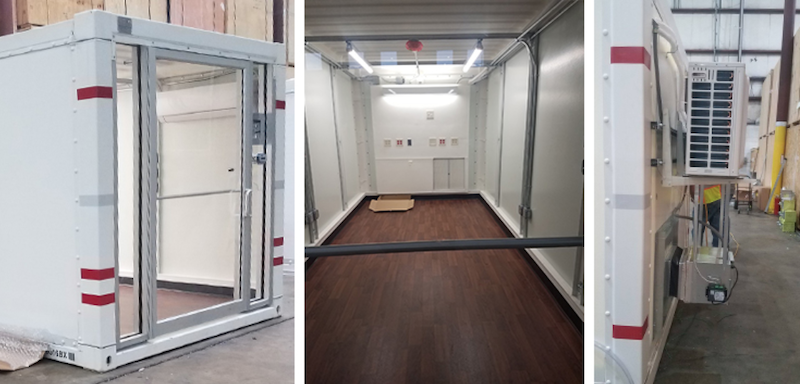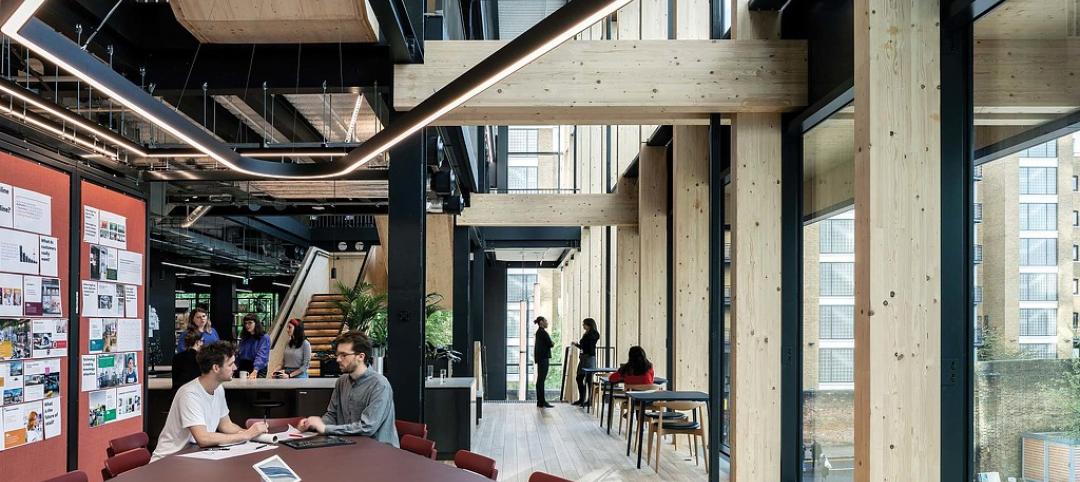CallisonRTKL worked with the facilities and infrastructure firm Patriot in a collaborative process on a design-build project for the U.S. Army Corps of Engineers. This project uses PODS to develop containers that can be repurposed into isolation units for alternative healthcare facilities treating coronavirus-positive patients.
Modifications to existing PODS containers were made to be used as a rapid response airborne infection isolation room (AIIR) and designed to enhance Healthcare Personnel (HCP) protection during care of infectious patients. Some of the design features implemented to limit HCP exposure:
- Isolation: Patients are isolated in an enclosed space, limiting to HCPs outside of the immediate patient care space.
- Transparency: The front wall of the container is designed with a full-glass door and sidelights to provide maximum patient visibility.
- Sanitation: Seamless flooring with cove base is installed to facilitate proper housekeeping and surface disinfection.
- Lighting: Multiple levels of lighting within the container haS been provided for patient comfort. Overbed lighting is provided for routine daytime settings with supplemental ceiling-mounted exam lighting and wall-mounted night lights.
- HVAC: HVAC systems are designed to provide horizontal air flow, introducing air from the front of the container and discharging air directly behind the patient at the rear of the container.
- Ease of Installation: Each container has individual electrical panels and condenser units mounted to the back of the container to simplify installation and commissioning of units within an alternate care site.
USACE APPROVED CONVERSION OF PODS CONTAINERS INTO SELF-CONTAINED ROOMS FOR COVID-19 PATIENTS

According to PODS, USACE developed, tested, and approved the conversion of PODS 12-foot and 16-foot containers into self-contained rooms with hospital beds that can be used for COVID-19 positive patients.
- Washable walls and floor cover per CDC guidelines
- Emergency back-up power
- Electrical and data outlets
- Exhaust fan with HEPA filtering
- Louver with gravity damper and balancing damper
- Modified isolation room entry door with direct line-of-sight visibility of patient
Related Stories
Coronavirus | Mar 16, 2020
Effective remote workforce: Key steps and strategies for success
As the potential scope of the COVID-19 outbreak has become more clear in the United States and Canada, public and private organizations from all industries, sectors and geographies are encouraging their teams to work remotely to reduce the spread of the virus.
Coronavirus | Mar 16, 2020
Coronavirus and the water cycle—here is what treatment professionals need to know
As the global health community tracks the spread of this virus, it’s important for water and wastewater professionals to keep updated on potential impacts.
Coronavirus | Mar 15, 2020
Designing office building lobbies to respond to the coronavirus
Touch-free design solutions and air purifiers can enhance workplace wellness.
Coronavirus | Mar 15, 2020
In the face of the coronavirus, workplace wellness is key
Here are a few considerations employers should keep in mind in creating plans for a healthy and effective work environment.
Coronavirus | Mar 13, 2020
AEC business impacts from COVID-19: We want your input!
The BD+C editors would like to hear from you on how your firm is handling business operations and projects during the coronavirus outbreak.
Coronavirus | Mar 13, 2020
COVID-19 and real estate: How the coronavirus is impacting the AEC industry
Here's the latest news BD+C editors are tracking on COVID-19's impact on the AEC industry and the real estate market.
Coronavirus | Mar 11, 2020
A look at how U.S. hospitals are designed to battle infectious diseases like coronavirus
Some health systems can use telehealth and video visits to asses and triage patients before they arrive at a hospital.














